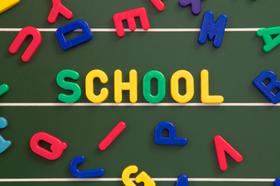Top Rankings
East Jasper Consolidated Sch School District ranks among the top 20% of public school district in Mississippi for:
Category
Attribute
Graduation Rate
Highest graduation rate (Top 5%)
Student Attention
Lowest student:teacher ratio (Top 1%)
For the 2025 school year, there is 1 public high school serving 229 students in East Jasper Consolidated Sch School District. This district's average high testing ranking is 9/10, which is in the top 20% of public high schools in Mississippi.
Public High School in East Jasper Consolidated Sch School District have an average math proficiency score of 82% (versus the Mississippi public high school average of 58%), and reading proficiency score of 42% (versus the 42% statewide average).
Public High School in East Jasper Consolidated Sch School District have a Graduation Rate of 92%, which is more than the Mississippi average of 89%.
The school with highest graduation rate is Heidelberg High School, with 90-94% graduation rate. Read more about public school graduation rate statistics in Mississippi or national school graduation rate statistics.
Minority enrollment is 100% of the student body (majority Black), which is more than the Mississippi public high school average of 55% (majority Black).
Overview
This School District
This State (MS)
# Schools
3 Schools
401 Schools
# Students
730 Students
156,115 Students
# Teachers
65 Teachers
11,991 Teachers
Student : Teacher Ratio
11:1
11:1
Student By Grade
District Rank
East Jasper Consolidated Sch School District, which is ranked within the top 50% of all 147 school districts in Mississippi (based off of combined math and reading proficiency testing data) for the 2022-2023 school year.
The school district's graduation rate of 92% has increased from 85-89% over five school years.
Overall District Rank
#64 out of 148 school districts
(Top 50%)
(Top 50%)
Math Test Scores (% Proficient)
53%
52%
Reading/Language Arts Test Scores (% Proficient)
34%
42%
Science Test Scores (% Proficient)
60-64%
55%
Graduation Rate
92%
89%
Students by Ethnicity:
Diversity Score
0.04
0.60
% American Indian
n/a
1%
% Asian
n/a
1%
% Hispanic
1%
5%
% Black
98%
45%
% White
1%
45%
% Hawaiian
n/a
n/a
% Two or more races
n/a
3%
All Ethnic Groups
District Revenue and Spending
The revenue/student of $18,336 is higher than the state median of $12,205. The school district revenue/student has grown by 12% over four school years.
The school district's spending/student of $15,204 is higher than the state median of $12,074. The school district spending/student has grown by 12% over four school years.
Total Revenue
$13 MM
$5,371 MM
Spending
$11 MM
$5,314 MM
Revenue / Student
$18,336
$12,205
Spending / Student
$15,204
$12,074
Best East Jasper Consolidated Sch School District Public High Schools (2025)
School
(Math and Reading Proficiency)
(Math and Reading Proficiency)
Location
Grades
Students
Rank: #11.
Heidelberg High School
(Math: 80-84% | Reading: 40-44%)
Rank:
Rank:
8/
Top 30%10
804 North Pine Ave
Heidelberg, MS 39439
(601) 787-3414
Heidelberg, MS 39439
(601) 787-3414
Grades: 9-12
| 229 students
Recent Articles

The 15 Biggest Failures of the American Public Education System
The world is in a constant state of change and those who fail to adjust fall behind. Unfortunately, the American public education system has not kept up with the times and is currently facing a number of serious problems. Keep reading to learn about the biggest failures affecting the modern U.S. public education system as well as some of the trends that could spark change.

Florida Governor Calls for More Funding for State鈥檚 Public School System
Florida Governor Rick Scott has introduced a state budget for next year that pumps one billion more dollars into the public school system. We鈥檒l look at his reasons for the increase and the responses to the proposal.

Can Your Child鈥檚 School Meet the National Standards?
The article discusses the challenges public schools face in meeting national educational standards. It examines current performance trends, identifies key issues affecting student achievement, and explores potential solutions for improving academic outcomes across U.S. public schools.





